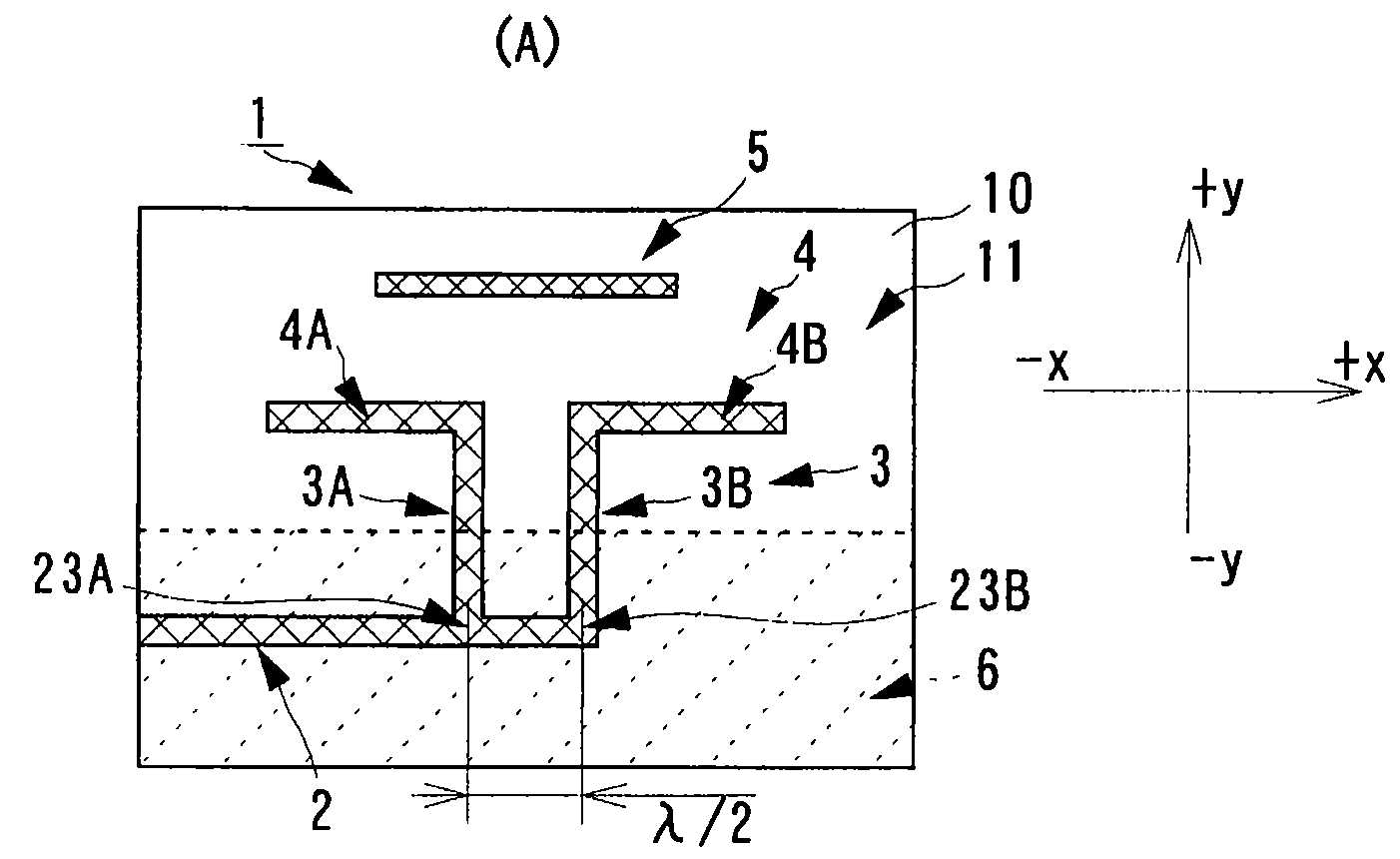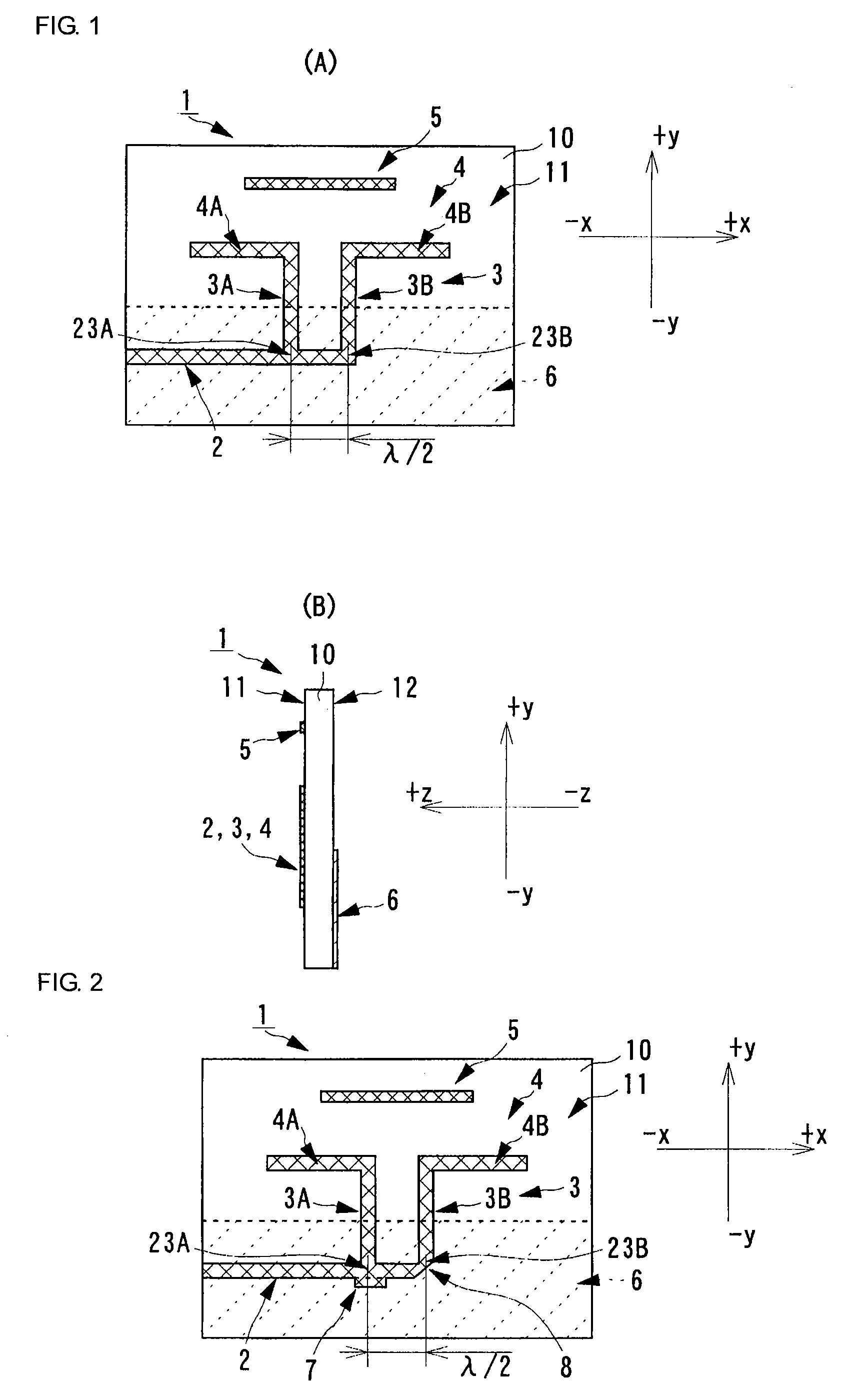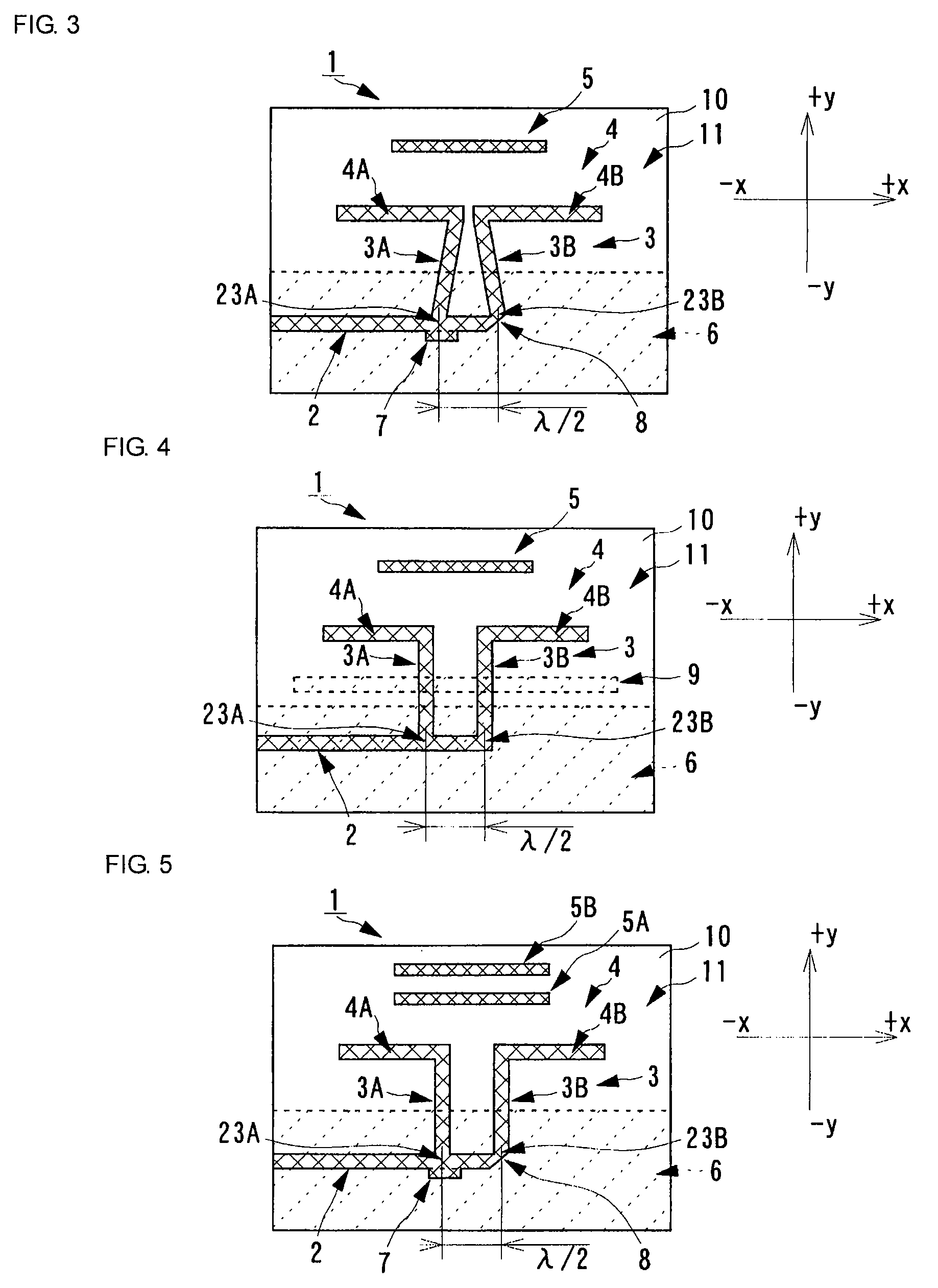Antenna Device, Array Antenna, Multi-Sector Antenna, High-Frequency Wave Transceiver
a technology of array antenna and antenna gain, applied in the structure of individual energised antenna array, resonant antenna, radiating element, etc., can solve the problems of increasing transmission loss, antenna gain decline, and relative large space needed for each antenna device, so as to achieve superior antenna gain and reduce transmission loss
- Summary
- Abstract
- Description
- Claims
- Application Information
AI Technical Summary
Benefits of technology
Problems solved by technology
Method used
Image
Examples
first embodiment
[0039]An antenna device according to the present invention will be described with reference to the drawings.
[0040]FIG. 1(A) is a plan view showing a structure of an antenna device 1 of this embodiment, whereas (B) is a side view thereof. In FIG. 1(A), the horizontal axis when viewed from the front is set as an x axis, whereas a direction toward the right and a direction toward the left are set as a +x direction and a −x direction, respectively. In addition, the vertical axis is set as a y axis, whereas an upward direction and a downward direction are set as a +y direction and a −y direction, respectively. In FIG. 1(B), the horizontal direction when viewed from the front is set as a z axis, whereas a direction toward the left and a direction toward the right are set as a +z direction and a −z direction, respectively. In addition, the vertical axis is set as a y axis, whereas an upward direction and a downward direction are set as a +y direction and a −y direction, respectively. Herei...
second embodiment
[0073]Next, an antenna device will be described with reference to the drawings.
[0074]FIG. 7(A) is an exterior perspective view of an antenna device 1′ of this embodiment, whereas (B) is a side view thereof. In addition, FIG. 7(C) is a side view showing a different structure of an antenna device of this embodiment.
[0075]In contrast to the antenna device 1 shown in FIG. 1, a conductor plate 61 is provided on a back surface 12 of a dielectric substrate 10 instead of the ground electrode 6 in the antenna device 1′ shown in FIG. 7. The structures on a top surface 11 of the dielectric substrate 10 are the same and the description regarding the top surface 11 is omitted.
[0076]The conductor plate 61 is formed in a shape substantially the size of the dielectric substrate 10 in a plan view of an x-y plane. A surface from one lateral face (a lateral face in the −y direction of FIG. 7) to a predetermined distance is formed like a plane (a planar portion 62). A surface from an end of this plana...
third embodiment
[0082]Next, an array antenna will be described with reference to the drawing.
[0083]FIG. 9 is a plan view showing a structure of an array antenna 200 of this embodiment.
[0084]As shown in FIG. 9, the array antenna 200 has a feeder electrode 2 extending linearly on the top surface of a dielectric substrate 10 in the x-axis direction. In addition, the array antenna 200 includes a balanced electrode, a radiation electrode, and a waveguide electrode for each of antenna devices 1A to 1C on the top surface of the dielectric substrate 10. Each of the antenna devices 1A to 1C is formed in the same shape as the above-described antenna device 1 shown in FIG. 3 except for the corner cut portion. In addition, in the array antenna 200, a junction position of the feeder electrode 2 and the balanced electrode of each of the antenna devices 1A to 1C is in a structure similar to the matching circuit 7 and the corner cut portion 8 shown in FIG. 3. Matching circuits 7A to 7C and a corner cut portion 8,...
PUM
 Login to View More
Login to View More Abstract
Description
Claims
Application Information
 Login to View More
Login to View More - R&D
- Intellectual Property
- Life Sciences
- Materials
- Tech Scout
- Unparalleled Data Quality
- Higher Quality Content
- 60% Fewer Hallucinations
Browse by: Latest US Patents, China's latest patents, Technical Efficacy Thesaurus, Application Domain, Technology Topic, Popular Technical Reports.
© 2025 PatSnap. All rights reserved.Legal|Privacy policy|Modern Slavery Act Transparency Statement|Sitemap|About US| Contact US: help@patsnap.com



